- The Importance of Fertilising Tomato Seedlings
- Understanding Nutrient Requirements
- Macronutrients
- Micronutrients
- Essential Fertilisers for Tomato Seedlings
- Optimal Application Methods
- 1. Soil Incorporation
- 2. Side Dressing
- 3. Foliar Application
- 4. Watering-in
- 5. Controlled-Release Fertilisers
- The Role of Nitrogen
- Benefits of Nitrogen
- Sources of Nitrogen
- Nitrogen Application
- Conclusion
- Avoidable Fertilisers for Tomato Seedlings
- 1. Ammonium-based Fertilisers
- 2. High-Phosphorus Fertilisers
- 3. Excessive Nitrogen Fertilisers
- 4. Synthetic Fertilisers with Harsh Chemicals
- 5. Overuse of Fertilisers
- Common Mistakes to Avoid
- Organic vs Synthetic Fertilisers
- Organic Fertilisers
- Synthetic Fertilisers
- Best Practices for Tomato Seedling Fertilisation
- Introduction
- 1. Start with a Soil Test
- 2. Use a Balanced Fertiliser
- 3. Apply Fertiliser at the Right Time
- 4. Avoid Overfertilisation
- 5. Provide Regular Watering
- 6. Consider Organic Fertilisers
- 7. Monitor Plant Growth
- 8. Feed Seedlings Gradually
- Conclusion
- “Question-Answer”
- What are essential fertilisers for tomato seedlings?
- Is it possible to over-fertilise tomato seedlings?
- What are some avoidable fertilisers for tomato seedlings?
- How often should tomato seedlings be fertilised?
- Can organic fertilisers be used for tomato seedlings?
- “Video” cucumbers, tomatoes immediately grow, do not get sick and bear fruit abundantly! Is a simple remedy!
When it comes to growing tomato seedlings, the proper fertilisation is essential for their health and overall growth. In order to achieve optimal results, it is important to understand the different types of fertilisers available and how they can benefit the seedlings. While some fertilisers are necessary for providing essential nutrients, others can be avoided to prevent potential harm to the plants.
Essential fertilisers play a crucial role in supporting the growth of tomato seedlings. These fertilisers typically contain a balanced ratio of nitrogen, phosphorus, and potassium (NPK) – the three main macronutrients essential for plant growth. Nitrogen promotes leaf and stem growth, phosphorus aids in root development, and potassium enhances overall plant health and resistance to diseases. By providing these essential nutrients, fertilisers ensure vigorous growth, strong roots, and abundant fruit production.
Avoidable fertilisers, on the other hand, are those that may not be necessary or can even have detrimental effects on tomato seedlings. One example is excessive use of nitrogen-rich fertilisers. While nitrogen is important for plant growth, applying too much can result in excessive vegetative growth at the expense of fruit production. Additionally, high levels of nitrogen can make plants more susceptible to diseases and pests.
“Overfertilising tomato seedlings with nitrogen-rich fertilisers can lead to leggy plants with weak stems.”
Another avoidable fertiliser is excessive use of fertilisers containing high levels of phosphorus. While phosphorus is necessary for root growth, excessive amounts can hinder the absorption of other essential nutrients and potentially cause nutrient imbalances. It is important to strike a balance when using phosphorus fertilisers to ensure optimal growth without risking nutrient deficiencies or toxicity.
In conclusion, the effective fertilisation of tomato seedlings is crucial for their growth and development. Essential fertilisers containing a balanced ratio of NPK provide the necessary nutrients for healthy plants and abundant fruit production. However, it is important to avoid excessive use of fertilisers, particularly those rich in nitrogen and phosphorus, to prevent potential harm to the seedlings. By understanding the different types of fertilisers and their effects, gardeners can ensure the optimal health and productivity of their tomato seedlings.
The Importance of Fertilising Tomato Seedlings
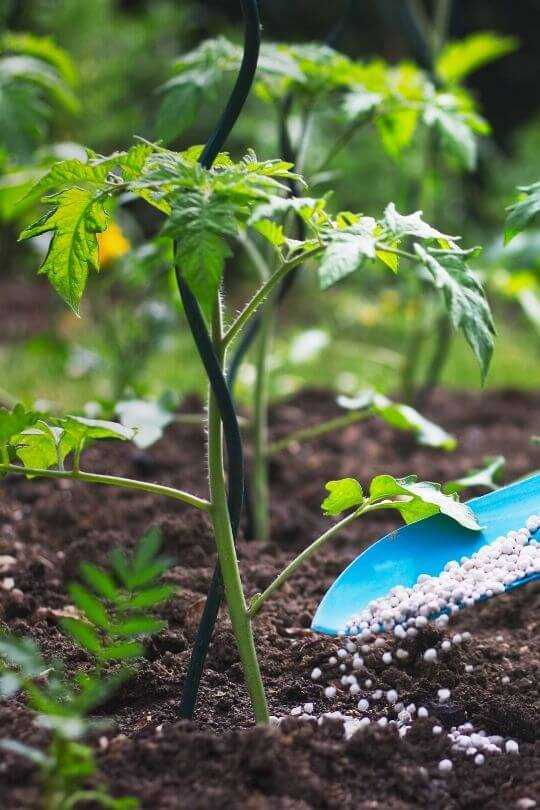
Tomato seedlings require proper fertilisation in order to grow healthy and produce high-quality fruits. Fertilisers provide essential nutrients that are necessary for the development of strong roots, vigorous growth, and optimal production.
Nutrient Deficiencies:
Tomato seedlings may suffer from nutrient deficiencies if they are not adequately fertilised. Some common signs of nutrient deficiencies include yellowing of leaves, stunted growth, and poor fruit development.
Essential Nutrients:
To ensure the healthy growth of tomato seedlings, it is important to provide them with the essential nutrients they need. These include:
- Nitrogen (N): Promotes leaf and stem growth
- Phosphorus (P): Supports root development and flowering
- Potassium (K): Enhances fruit production and disease resistance
- Calcium (Ca): Strengthens cell walls and prevents blossom end rot
- Magnesium (Mg): Aids in photosynthesis and chlorophyll production
Fertiliser Types:
There are various types of fertilisers that can be used to supply these essential nutrients to tomato seedlings. These include:
- Organic Fertilisers: Derived from natural sources, such as compost, manure, or fish emulsion. They provide a slow and steady release of nutrients.
- Inorganic Fertilisers: Also known as synthetic or chemical fertilisers. They provide a quick release of nutrients and can be tailored to specific nutrient needs.
- Foliar Fertilisers: Applied as a spray directly to the leaves. They can provide a quick boost of nutrients in case of deficiencies.
Timing and Application:
Proper timing and application of fertilisers is crucial for the effective nutrition of tomato seedlings. Fertilisers should be applied before planting, during transplanting, and throughout the growing season. The specific amount and frequency of application will depend on the type of fertiliser and the specific needs of the seedlings.
Conclusion:
Fertilising tomato seedlings is essential for their healthy growth and optimal production. Adequate supply of essential nutrients through proper fertilisation will help prevent nutrient deficiencies and ensure the development of strong plants that yield high-quality tomatoes.
Understanding Nutrient Requirements
Tomato seedlings have specific nutrient requirements to support their growth and development. By understanding these requirements, growers can ensure that their seedlings receive the necessary nutrients to thrive.
Macronutrients
Macronutrients are essential for the healthy growth of tomato seedlings. They are required in relatively large quantities and include nitrogen (N), phosphorus (P), and potassium (K).
- Nitrogen (N): Nitrogen is crucial for leaf and stem development. It aids in the production of proteins and enzymes that are essential for photosynthesis and overall plant growth.
- Phosphorus (P): Phosphorus plays a vital role in root development, flower formation, and fruit production.
- Potassium (K): Potassium is responsible for regulating various physiological processes in tomato seedlings, including water regulation, plant defense mechanisms, and nutrient uptake.
Micronutrients
Micronutrients are required in smaller quantities but are equally important for tomato seedling growth. These include elements such as iron (Fe), manganese (Mn), zinc (Zn), copper (Cu), boron (B), molybdenum (Mo), and chlorine (Cl).
- Iron (Fe): Iron is essential for chlorophyll production and helps in the transfer of energy within the plant.
- Manganese (Mn): Manganese is vital for photosynthesis and enzyme activation.
- Zinc (Zn): Zinc plays a role in various enzymatic reactions and helps with the synthesis of growth hormones.
- Copper (Cu): Copper helps form lignin, which provides structural support to the plant.
- Boron (B): Boron is essential for cell wall formation and helps regulate other nutrients.
- Molybdenum (Mo): Molybdenum plays a crucial role in nitrogen fixation and enzyme activation.
- Chlorine (Cl): Chlorine aids in photosynthesis and osmotic regulation.
There are several ways to fulfill the nutrient requirements of tomato seedlings. It is important to provide a balanced fertilizer that contains the necessary macronutrients and micronutrients. This can be achieved through the use of commercial fertilizers or by adding organic matter such as compost or well-rotted manure.
Additionally, regular soil testing can help determine the nutrient levels and any deficiencies, allowing growers to adjust their fertilization practices accordingly.
| Macronutrients | Deficiency Symptoms |
|---|---|
| Nitrogen (N) | Yellowing of older leaves |
| Phosphorus (P) | Purple coloration of leaves |
| Potassium (K) | Leaf scorching and curling |
By understanding the nutrient requirements of tomato seedlings and implementing appropriate fertilization practices, growers can ensure healthy and productive plants.
Essential Fertilisers for Tomato Seedlings
Tomato seedlings require certain essential fertilisers in order to grow and develop properly. These fertilisers provide the necessary nutrients for healthy plant growth and fruit production. Here are some of the essential fertilisers that should be used for tomato seedlings:
Nitrogen: Nitrogen is an essential nutrient for tomato seedlings as it promotes overall plant growth and helps to develop strong stems and leaves. Nitrogen can be provided in the form of organic fertilisers like well-rotted manure or compost, or inorganic fertilisers like ammonium nitrate or urea. It is important to use nitrogen fertilisers sparingly, as excessive amounts can lead to excessive foliage growth at the expense of fruit production.
Phosphorus: Phosphorus is important for root development and flower formation in tomato seedlings. It can be supplied through the use of organic fertilisers like bone meal or rock phosphate, or inorganic fertilisers like triple superphosphate. Phosphorus is especially important during the early stages of growth, so it is recommended to apply a phosphorus-rich fertiliser when transplanting the seedlings.
Potassium: Potassium helps with overall plant health and disease resistance. It also plays a role in fruit development and quality. Potassium can be supplied through organic fertilisers like wood ash or banana peels, or inorganic fertilisers like potassium chloride or potassium sulfate. It is important to maintain a proper balance between nitrogen and potassium, as excessive amounts of potassium can inhibit the uptake of nitrogen.
Calcium: Calcium is important for tomato seedlings as it helps to prevent blossom end rot, a common disorder that affects the quality of the fruit. Calcium can be supplied through the use of lime or gypsum. It is important to maintain proper soil pH levels, as acidic soils can inhibit the availability of calcium to the plants.
Magnesium: Magnesium is essential for chlorophyll production and overall plant health. It can be supplied through the use of organic fertilisers like Epsom salt or inorganic fertilisers like magnesium sulfate. Magnesium is often included as a component in balanced fertilisers.
In addition to these essential fertilisers, it is important to regularly monitor the nutrient levels in the soil and adjust the fertiliser application accordingly. Tomato seedlings have specific nutrient requirements at different stages of growth, so it is important to provide the right nutrients at the right time to ensure optimal development and fruit production.
Optimal Application Methods
When it comes to fertilising tomato seedlings, the method of application can greatly affect the effectiveness of the fertiliser. Here are some optimal application methods to consider:
1. Soil Incorporation
One common method of fertiliser application is soil incorporation. This involves mixing the fertiliser directly into the soil before planting the tomato seedlings. It ensures that the nutrients are present in the soil as the roots begin to grow, providing an immediate source of nutrition.
When using this method, it is important to follow the recommended application rates and evenly distribute the fertiliser throughout the planting area. The soil should be thoroughly mixed to ensure that the nutrients are evenly distributed and accessible to the roots.
2. Side Dressing
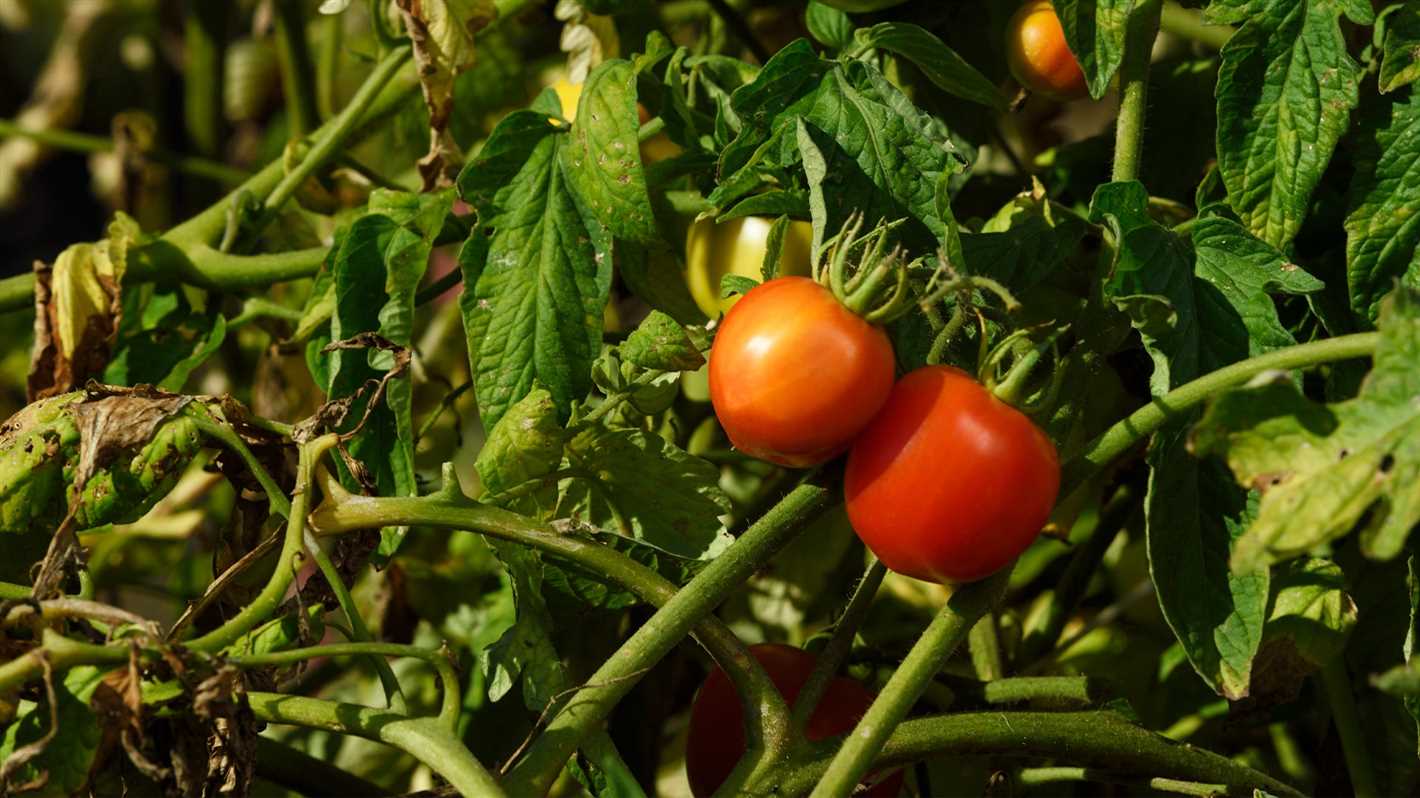
Side dressing is another effective method of fertiliser application for tomato seedlings. With this method, the fertiliser is applied in a band along the side of the planting row, away from the base of the plants. This allows the nutrients to gradually release into the soil and be taken up by the roots over time.
To side dress tomato seedlings, sprinkle the fertiliser along the row, making sure to keep it at least 6 inches away from the base of the plants. Gently work the fertiliser into the top inch of soil, being careful not to disturb the roots. Water the plants thoroughly after side dressing to help the nutrients dissolve and move into the root zone.
3. Foliar Application
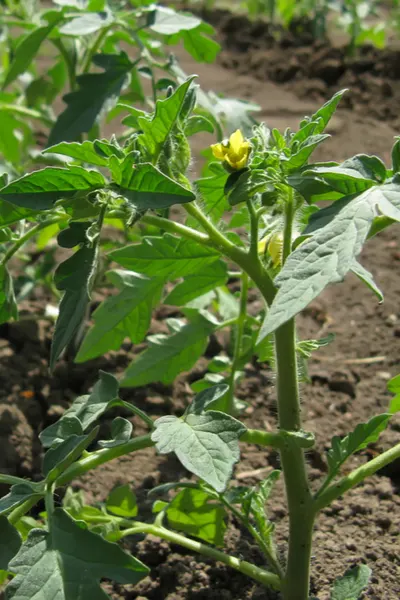
In some cases, a foliar application of fertiliser can be beneficial for tomato seedlings. This involves spraying a diluted fertiliser solution directly onto the leaves of the plants. The nutrients are then absorbed through the leaves and transported to the roots.
When using this method, it is important to choose a fertiliser that is specifically formulated for foliar application, as not all fertilisers are suitable for this method. Follow the recommended dilution rates and spray the solution onto the leaves, making sure to cover both the tops and undersides. Avoid spraying during the hottest parts of the day to prevent leaf burn.
4. Watering-in
Another simple and effective method of fertiliser application is watering-in. This involves dissolving the fertiliser in water and applying it to the soil around the tomato seedlings. The water helps to move the nutrients into the root zone, where they can be taken up by the plants.
To water in fertiliser, dissolve the recommended amount in water according to the package instructions. Gently pour the solution onto the soil around the plants, making sure to avoid wetting the foliage. Watering-in should be done in the morning or evening to minimize water evaporation and ensure efficient nutrient absorption.
5. Controlled-Release Fertilisers
For those looking for a more hands-off approach, controlled-release fertilisers can be a convenient option. These fertilisers are designed to slowly release nutrients over a specific period of time. They are typically applied to the soil at the time of planting and provide a continuous supply of nutrients throughout the growing season.
When using controlled-release fertilisers, follow the recommended application rates and evenly distribute the pellets or granules throughout the planting area. The fertiliser should be lightly incorporated into the top inch of soil to ensure contact with the roots. Water the plants thoroughly after application to activate the release of nutrients.
By choosing the optimal application method for fertilising tomato seedlings, you can ensure that the plants receive the necessary nutrients for healthy growth and high yields.
The Role of Nitrogen
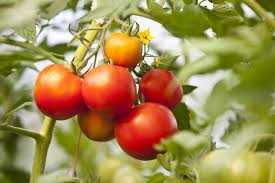
Nitrogen is an essential nutrient for the growth and development of tomato seedlings. It is a key component of amino acids, which are the building blocks of proteins, and plays a crucial role in various metabolic processes.
Benefits of Nitrogen
- Promotes vegetative growth: Nitrogen is important for the development of leaves, stems, and roots. It stimulates cell division and elongation, allowing the seedlings to grow taller and develop a strong root system.
- Enhances chlorophyll production: Nitrogen is a vital component of chlorophyll, the pigment responsible for photosynthesis. It helps in the production of energy-rich molecules that are necessary for plant growth.
- Improves nutrient uptake: Nitrogen plays a role in the transportation of other essential nutrients within the plant. It helps in the absorption and utilization of minerals such as phosphorus and potassium.
- Increases yield: A sufficient supply of nitrogen can significantly increase the yield of tomato plants. It promotes the growth of new shoots, flowers, and fruits, resulting in a higher production of tomatoes.
Sources of Nitrogen
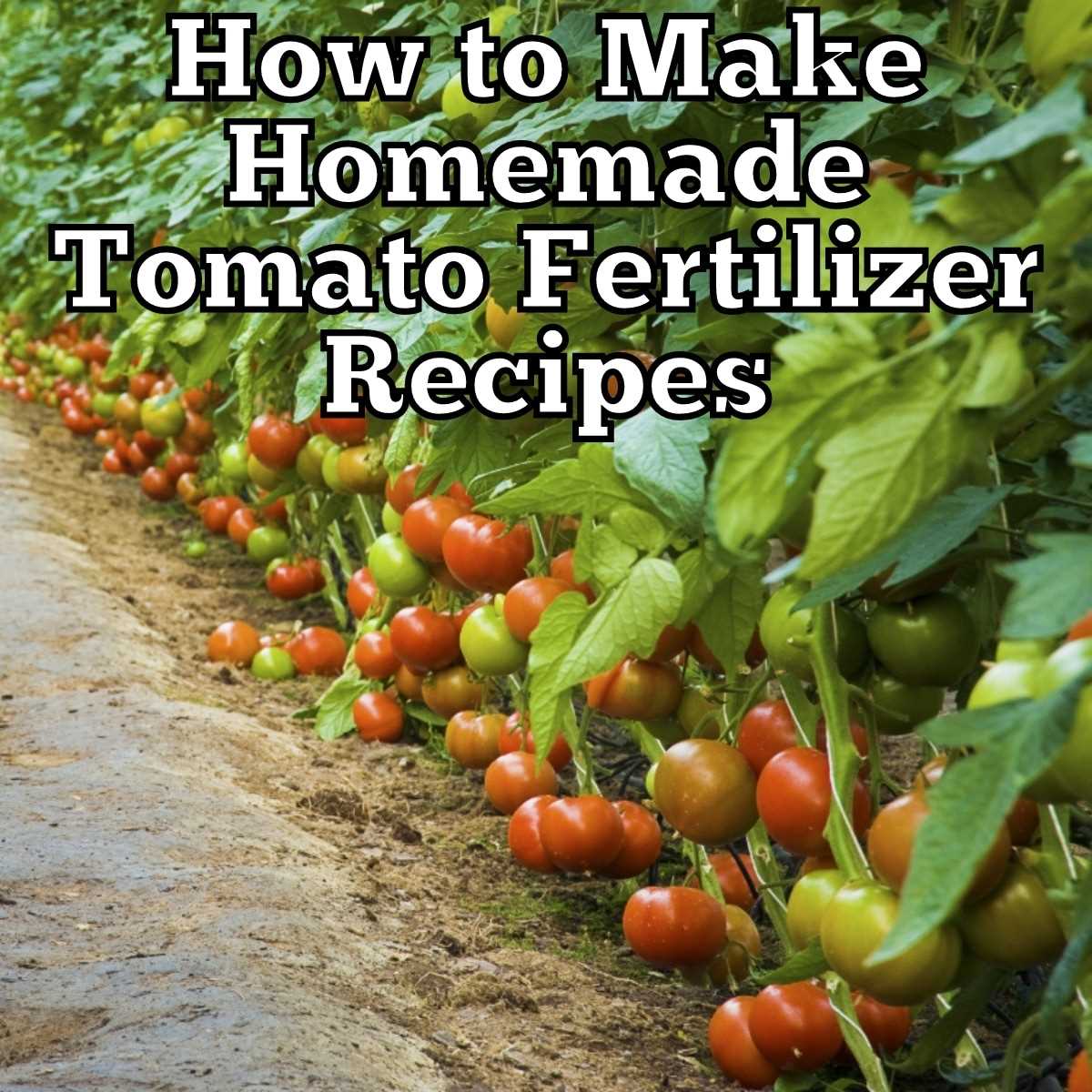
There are various sources of nitrogen that can be used to fertilize tomato seedlings:
- Organic fertilizers: Organic fertilizers such as compost, manure, and blood meal are excellent sources of nitrogen. They slowly release nutrients into the soil, providing a steady supply of nitrogen over time.
- Inorganic fertilizers: Inorganic fertilizers, such as ammonium nitrate or urea, contain high concentrations of nitrogen. They are readily available and can offer a quick boost of nutrients to the seedlings.
- Cover crops: Planting nitrogen-fixing cover crops, such as clover or legumes, can help replenish nitrogen levels in the soil. These plants have the ability to convert atmospheric nitrogen into a form that is usable by other plants.
Nitrogen Application
Proper timing and application of nitrogen are crucial for the effective fertilization of tomato seedlings:
- Early application: Nitrogen should be applied before transplanting the seedlings into the garden bed. This ensures that the plants receive the necessary nutrients from the beginning of their growth.
- Balanced application: It is important to provide a balanced amount of nitrogen to avoid overfertilization. Too much nitrogen can lead to excessive vegetative growth and delay fruiting.
- Split application: Splitting the nitrogen application into multiple doses can help ensure a steady supply of nutrients throughout the growing season. This can be done by applying fertilizer every few weeks.
Conclusion
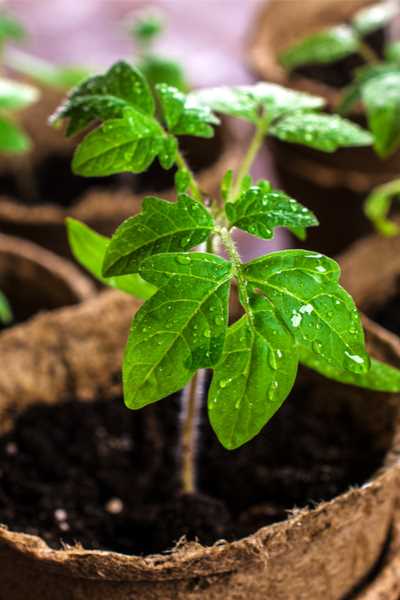
Nitrogen plays a critical role in the growth and development of tomato seedlings. It promotes vegetative growth, enhances chlorophyll production, improves nutrient uptake, and increases yield. By using organic or inorganic fertilizers and incorporating nitrogen-fixing cover crops, growers can provide a sufficient supply of nitrogen for their tomato plants. Proper timing and balanced application are necessary to maximize the benefits of nitrogen fertilization.
Avoidable Fertilisers for Tomato Seedlings
While fertilisers can play a crucial role in providing essential nutrients to tomato seedlings, there are certain fertilisers that should be avoided. These fertilisers may have detrimental effects on the growth and development of tomato seedlings, and can even lead to plant failure.
1. Ammonium-based Fertilisers
Ammonium-based fertilisers, such as ammonium nitrate or ammonium sulfate, should be avoided for tomato seedlings. These fertilisers can increase the acidity of the soil, which is not favorable for tomato plants. High levels of acidity can hinder the absorption of essential nutrients by the roots, leading to nutrient deficiencies.
2. High-Phosphorus Fertilisers
Tomato seedlings require a balanced nutrient supply, and excessive phosphorus can disrupt this balance. While phosphorus is important for root development and flowering, too much of it can inhibit the uptake of other important nutrients like potassium and calcium. Therefore, it is recommended to avoid high-phosphorus fertilisers when growing tomato seedlings.
3. Excessive Nitrogen Fertilisers
Nitrogen is essential for promoting leaf and stem growth in tomato seedlings. However, excessive nitrogen fertilisation can lead to an overgrowth of foliage at the expense of fruit production. It’s important to maintain a balanced nitrogen level to ensure healthy growth and fruit development.
4. Synthetic Fertilisers with Harsh Chemicals
Synthetic fertilisers containing harsh chemicals, such as urea or ammonium phosphate, should be avoided for tomato seedlings. These fertilisers can not only damage the soil structure but also harm beneficial microorganisms. It’s better to opt for organic fertilisers or natural alternatives that promote soil health and microbial activity.
5. Overuse of Fertilisers
Using excessive amounts of fertilisers, regardless of their composition, can be detrimental to tomato seedlings. Overfertilisation can lead to salt buildup in the soil, which can harm the roots and inhibit plant growth. It’s important to follow the recommended application rates and avoid overusing fertilisers.
By avoiding these fertilisers and adopting a balanced nutrient management approach, tomato seedlings can grow healthy and productive, ensuring a bountiful harvest.
Common Mistakes to Avoid
- Over-fertilizing: One of the common mistakes that tomato growers make is applying excessive amounts of fertilizers. This can lead to nutrient imbalances and damage to the seedlings. It is important to follow the recommended dosage and frequency of fertilization to avoid over-fertilizing.
- Using the wrong type of fertilizer: Not all fertilizers are suitable for tomato seedlings. Using the wrong type of fertilizer can result in poor nutrient uptake and stunted growth. It is recommended to use a balanced fertilizer specifically formulated for seedlings or a slow-release fertilizer that will provide a steady supply of nutrients over time.
- Ignoring soil pH: Tomato plants prefer slightly acidic soil with a pH range of 6.0 to 6.8. Ignoring soil pH can affect nutrient availability and hinder the seedlings’ growth. It is essential to test the soil pH before fertilizing and adjust it if necessary using pH modifiers.
- Applying fertilizer too close to the stem: Placing fertilizer directly on or too close to the stem can cause root burn and damage the seedlings. Always apply fertilizers a few inches away from the stem to prevent direct contact.
- Not watering properly: Watering plays a crucial role in nutrient uptake and fertilizer efficiency. Inadequate watering can prevent the seedlings from absorbing nutrients effectively. Ensure that the soil is evenly moist but not waterlogged to facilitate nutrient absorption.
- Using contaminated or expired fertilizers: Using fertilizers that are contaminated or past their expiration date can introduce harmful pathogens or provide insufficient nutrients to the seedlings. Always check the quality and expiration date of fertilizers before application.
- Not considering other factors: Fertilization is just one aspect of growing healthy tomato seedlings. Other factors such as sunlight, temperature, pests, and diseases also play a significant role. Ignoring these factors can undermine the effectiveness of fertilization. It is important to create favorable growing conditions and address any issues promptly.
Organic vs Synthetic Fertilisers
The choice between organic and synthetic fertilisers is a highly debated topic among gardeners and farmers. Both types of fertilisers have their advantages and disadvantages, and the decision ultimately depends on the specific needs and goals of the user.
Organic Fertilisers
Organic fertilisers are derived from natural sources such as plants, animal manure, and compost. They are rich in nutrients and are slow-release, which means they release nutrients gradually over time. This slow-release nature helps prevent over-fertilisation and reduces the risk of nutrient runoff, which can be harmful to the environment.
- Advantages: Organic fertilisers improve soil structure, enhance microbial activity, and promote long-term soil health. They also provide a wide range of essential nutrients and micronutrients for plant growth.
- Disadvantages: Organic fertilisers typically have a lower nutrient concentration compared to synthetic fertilisers. They also take longer to break down and release nutrients, which may result in delayed plant growth and development.
Synthetic Fertilisers
Synthetic fertilisers are manufactured using chemical processes and are often referred to as inorganic or chemical fertilisers. They are highly concentrated in nutrients and rapidly release them when applied to plants. Synthetic fertilisers provide readily available nutrients that can promote quick growth and high yields.
- Advantages: Synthetic fertilisers are easily soluble in water, making them quickly available to plants. They can address nutrient deficiencies more rapidly and effectively than organic fertilisers. Additionally, their controlled nutrient content allows for precise nutrient ratios tailored to specific plant requirements.
- Disadvantages: Synthetic fertilisers can have negative impacts on soil health, as they can disrupt the natural balance of beneficial microbes and organisms. They can also contribute to nutrient imbalances, leading to the accumulation of certain nutrients and the depletion of others.
Ultimately, the choice between organic and synthetic fertilisers depends on factors such as the specific nutrient requirements of the plants, environmental considerations, and personal preferences. Many gardeners and farmers opt for a combination of both types to maximize benefits and minimize drawbacks.
Best Practices for Tomato Seedling Fertilisation
Introduction
Proper fertilisation is crucial for the successful growth of tomato seedlings. This article presents some best practices for fertilising tomato seedlings to ensure healthy and productive plants.
1. Start with a Soil Test
Before adding any fertiliser to your tomato seedlings, it’s important to start with a soil test. This will help you determine the nutrient levels and pH of the soil, which can guide you in choosing the appropriate fertilisers.
2. Use a Balanced Fertiliser
For tomato seedlings, it’s best to use a balanced fertiliser that contains equal parts of nitrogen, phosphorus, and potassium (NPK). This will provide the essential nutrients needed for healthy growth. Look for fertilisers with an NPK ratio of 10-10-10 or 14-14-14.
3. Apply Fertiliser at the Right Time
It’s important to apply fertiliser at the right time to avoid stunting growth or burning the seedlings. Start fertilising tomato seedlings when they have developed their second set of true leaves, usually around 3-4 weeks after germination. Apply the fertiliser according to the manufacturer’s instructions.
4. Avoid Overfertilisation
Overfertilisation can be detrimental to tomato seedlings. It can lead to nutrient imbalances, root damage, and weakened plants. Follow the recommended dosage on the fertiliser package and avoid applying too much fertiliser.
5. Provide Regular Watering
Tomato seedlings require regular watering to ensure proper nutrient uptake. Water thoroughly until the soil is moist, but not waterlogged. Avoid letting the seedlings dry out or become too saturated, as this can affect their ability to absorb nutrients.
6. Consider Organic Fertilisers
If you prefer to use organic fertilisers, there are several options available. Compost, aged manure, and worm castings are excellent choices for providing nutrients to tomato seedlings. Just make sure to source high-quality organic fertilisers to avoid introducing pathogens or weed seeds.
7. Monitor Plant Growth

Regularly monitor the growth of your tomato seedlings to assess their nutrient needs. Check for signs of nutrient deficiencies, such as yellowing leaves or stunted growth, and adjust your fertilisation routine accordingly.
8. Feed Seedlings Gradually
When feeding tomato seedlings, it’s best to start with a diluted fertiliser solution and gradually increase the strength as the plants mature. This allows the seedlings to adjust to the nutrients and prevents shock or damage.
Conclusion
By following these best practices for tomato seedling fertilisation, you can ensure healthier, more robust plants that produce bountiful fruit. Remember to always consider the specific needs of your tomato seedlings and make adjustments as necessary to optimise their growth and productivity.
“Question-Answer”
What are essential fertilisers for tomato seedlings?
Essential fertilisers for tomato seedlings include nitrogen, phosphorous, and potassium. These nutrients help promote healthy root growth, flowering, and fruit development.
Is it possible to over-fertilise tomato seedlings?
Yes, over-fertilising tomato seedlings can be harmful. Excessive amounts of fertiliser can lead to nutrient burn, stunted growth, or even death of the seedlings. It’s important to follow proper fertilising guidelines.
What are some avoidable fertilisers for tomato seedlings?
Some avoidable fertilisers for tomato seedlings include high-nitrogen fertilisers, as they can promote excessive leaf growth at the expense of fruit production. Additionally, using fertilisers high in sodium or chloride should be avoided, as they can harm the plants.
How often should tomato seedlings be fertilised?
Tomato seedlings should be fertilised every 10-14 days during their active growing period. However, it is important to monitor the plants for signs of nutrient deficiency or excess and adjust the fertilisation schedule accordingly.
Can organic fertilisers be used for tomato seedlings?
Yes, organic fertilisers can be used for tomato seedlings. Organic fertilisers provide nutrients to the plants in a slow-release form, promoting long-term soil health. Examples of organic fertilisers include compost, manure, and worm castings.







